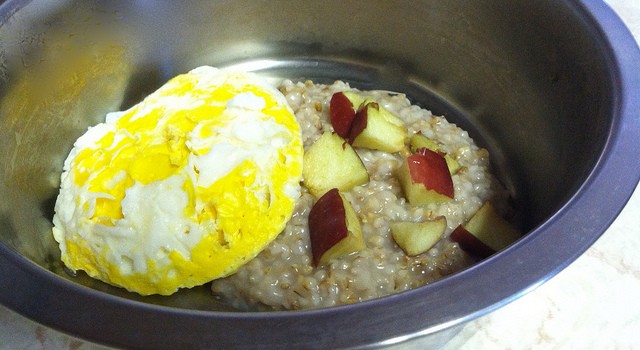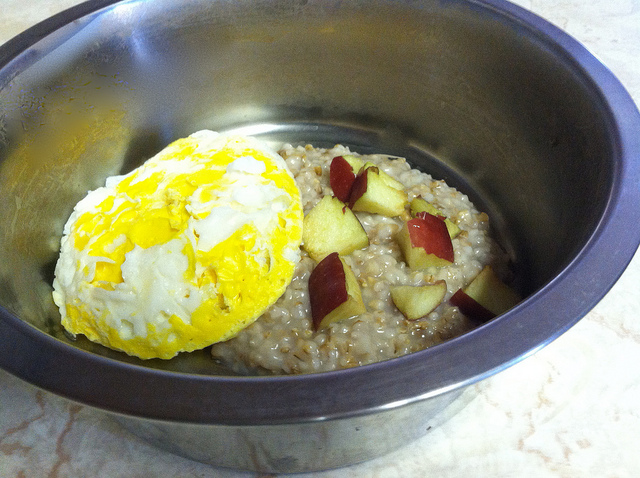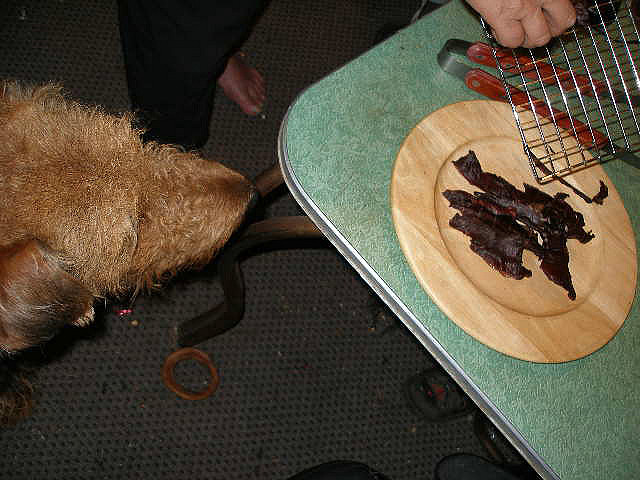Lots if human foods can be straight up deadly for pets, like grapes, chocolate, onions and raisins, just to name a few. While others like broccoli and cauliflower are very beneficial, they need to be cooked thoroughly or they too can cause damage. It is generally good to stay away from wheat and corn as they are just fillers and unhealthy choices for your pet’s diet.
Meats, most fish, cheeses, other animal products and probiotics are healthy human food options for our pets.
What kind of diet do you feed your precious pooch?
Check out the top 5 human foods that are most beneficial for your pet and why:
Unsweetened Canned Pumpkin: It regulates moisture and provides a gentle fiber, making it a terrific tool to combat constipation or diarrhea. Dosage is 1 tablespoon once or twice daily for a 30-pound dog or a 1/2 teaspoon for an average cat, in food or as a treat. I’m surprised at how many cats like to eat straight pumpkin from a spoon, but you also can mix pumpkin with meat, baby food or yogurt. Put the pumpkin or pumpkin mixes (with yogurt, meat baby foods or other meat-based treats) into ice cube trays or in rubber toys, or in spoonfuls on wax paper and freeze to use later as treats.
Fish Oil: Omegas encourage free-radical scavenging, which can decrease inflammation. But take note: Carnivores do not efficiently convert plant sources of omegas, like flaxseed or hemp, so stick with fish oils. While Omegas are usually a helpful supplement, they’re not for all pets. Fish oil may not be recommended for an animal that is overly hot, and has oily/hot skin or loose stools. If you’re giving your pet Omegas, be sure to monitor the response to see if they’re right for your animal.
Psyllium Fiber: Typically a scavenger or carnivore would eat a good deal of fiber – including roughage like hair, feathers, and nails. Adding psyllium fiber (about a teaspoon per meal for a 50-pound dog or a 1/4 teaspoon for an average cat) is a great way to improve the fiber content of the food. It can be found in most supplement sections of your local drugstore or supermarket.
White Rice: Cook the white rice with extra water and overcook until it is gloopy. Your pet’s system can absorb it better when it’s overcooked and sticky-wet. The reason it works is because of its absorbent quality, not its nutritive value, which is why brown rice is not as effective for diarrhea and loose stools. But do not use Minute Rice; all the good absorbent stuff has been processed out of it.
Chicken or Beef Broth: Warm, low sodium chicken or beef broth — or even plain warm water — can be added to pet food to increase palatability.
Image Source: August McLaughlin on Flickr






Leave a Reply